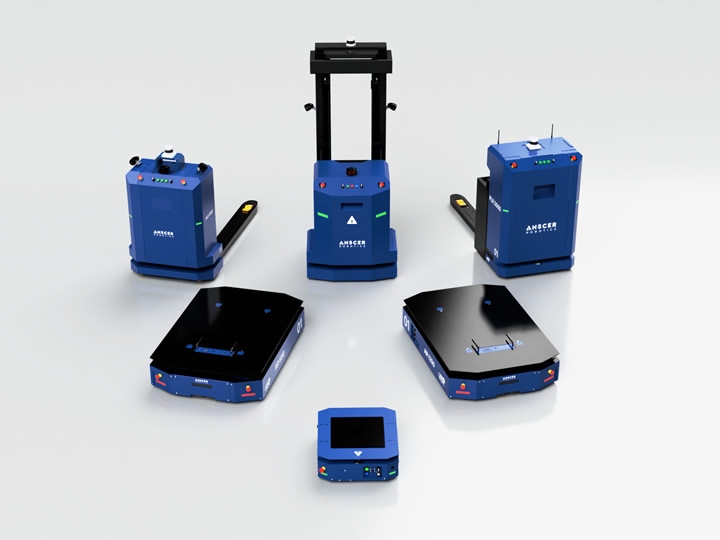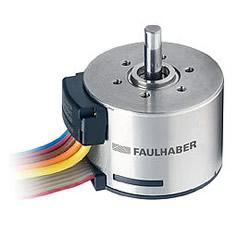They can operate seamlessly in unstructured environments and adapt to changing floor conditions. At particular points where highest precision is required, we revert to a QR code location.
 Hybrid AMRs are a Game-Changer
Hybrid AMRs are a Game-Changer

Q&A with Mark Messina, CEO | Anscer Robotics
Let’s start with Anscer Robotics—what is the core problem and unique approach Anscer Robotics' solving in today’s warehouse and logistics environments?
At Anscer Robotics, we’re addressing a fundamental blind spot in automation: factory-floor logistics. While many robotics companies focus on e-commerce and retail fulfillment, the manufacturing sector has been largely overlooked. Our approach is to build industrial-grade AMRs that are purpose-built for manufacturing and production environments, where the demands are different and reliability is everything. Whether it’s tugging, towing, pallet transport, or heavy material handling, our robots are engineered to operate in dynamic, multi-shift operations, sharing space with humans safely. We aim to bring flexible, scalable automation to factory logistics without costly infrastructure overhauls.
You’ve talked about Hybrid AMRs as a game-changer. Can you explain what makes them different from traditional AMRs and AGVs—and why that distinction matters for customers?
Hybrid AMRs blend the mm positional accuracy of AGVs with the flexible navigation of AMRs that don’t need infrastructure changes. Traditional AGVs follow predefined routes and require facility prep; e.g. wires, magnets, or QR codes. Pure AMRs offer more flexibility, navigating using vision or lidar, but often lack the durability for factory settings and the mm level repeatable positional precision found in AMRs. Our Hybrid AMRs, like the Anscer UPA and UT vehicles, use robust SLAM navigation combined with high-load capabilities and advanced obstacle detection (e.g. all the freedom of AMR). They can operate seamlessly in unstructured environments and adapt to changing floor conditions. At particular points where highest precision is required, we revert to a QR code location. The distinction matters because factories don’t have the luxury of halting operations for a three-month integration project. We can map using lidar, drop a few precisely located QR codes where the plant operations require such precision, and go. They need plug-and-play automation that works, and keeps working. We can also easily add more precision locations at any time, so we are very flexible as a hybrid.
How does your Robots-as-a-Service (RaaS) model reshape how companies think about automation investment and scalability?
RaaS shifts automation from a CapEx to OpEx, which is a game-changer for project approvals, project scalability and risk mitigation. Companies can scale up or down based on need without being locked into a long-term hardware commitment. What makes Anscer’s RaaS different is that we offer a RaaSmodel based on utilization. If the robot isn’t working much, the customer isn’t paying much. It’s a performance-based model that aligns incentives and reduces friction. This approach encourages companies to pilot automation faster, scale as needed, and experiment with optimization strategies without making a massive upfront investment.
Fleet coordination is a major operational hurdle in multi-robot environments. How does Anscer’s proprietary fleet management system solve this challenge?
Our fleet management system ensures that multi-robot coordination is smooth, and efficient. The software dynamically orchestrates task distribution, traffic control, and charging behavior based on real-time conditions. It’s designed to enhance operational flow—not complicate it. Whether a facility has two robots or two hundred, the system intelligently adapts to site-specific priorities to avoid congestion and delays. We also make integration easy so that customers can manage the fleet via a tablet, touchscreen, or API-integrated ERP system. Our dashboards can show system performance details via any webpage in the plant. The bottom line is: we don’t slow down your operations, we streamline them.
You’ve led teams at Geek+ and Amazon Robotics. What lessons from those experiences are you bringing into your leadership at Anscer?
I’ve seen what works—and what doesn’t—both scaling and at massive scale. One of the lessons is to stay focused on what we do best. At Anscer, we’re not trying to be everything to everyone. We’re concentrating on solving hard problems in material movement and factory automation with solutions that are accessible, durable, and scalable. Another lesson is the value of trust. Our team has deep roots in the robotics space, and our reputation matters. Customers don’t just buy robots, they are buying confidence in your ability to support, scale, and evolve with them this year and fifteen years on. That’s something we prioritize in every engagement.
Looking ahead, what emerging trends do you believe will most impact warehouse robotics over the next 2–3 years—and how is Anscer preparing for them?
There’s a lot of buzz around humanoid robots and hyper-automation, and while those trends are real, the overlooked piece is interoperability. As more robotic systems, be they industrial, humanoid, AGV, etc, enter factory floors, the ability for them to work together handing off tasks, sharing data, sharing tasks and optimizing in real time, becomes critical. That’s where we see a growing opportunity. Our robots, via our FMS, are designed to be part of a cohesive automation ecosystem. As factories invest in higher levels of automation, including robotic arms, humanoids, and other form factors, they'll still need efficient, rugged platforms like ours to move materials around more efficiently than any other option. We're building that connective tissue in the automation stack.
Mark Messina serves as the CEO of ANSCER Robotics Americas, where he leads U.S. operations and strategic expansion for one of India’s fastest-growing robotics companies. With more than two decades of experience in engineering, manufacturing, and operations, Mark plays a critical role in scaling ANSCER’s presence across North America, helping industries adopt next-generation Autonomous Mobile Robot (AMR) solutions that drive safety, productivity, and transformation in logistics and manufacturing environments.
The content & opinions in this article are the author’s and do not necessarily represent the views of RoboticsTomorrow
Featured Product


